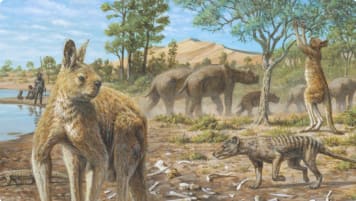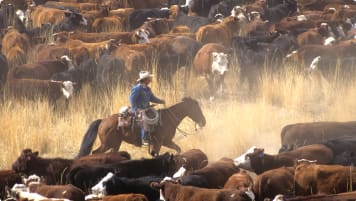The expedition of Edward John Eyre, 1841
For mature and senior travellers on a small group tour into outback Australia, John Eyre is an explorer who extended the colonial knowledge of outback Australia. Escorted small group tours for couple and solo travellers extend your learning on Aboriginal outback history and the colonials.
17 Jul 20 · 9 mins read

The expedition of Edward John Eyre, 1841
In 1841, the explorer Edward John Eyre made one of the great treks across the Australian continent, passing from Port Lincoln, South Australia, to Albany, Western Australia through the arid expanses of the Nullabor Plain.
Edward John Eyre was born in Whipsnade, Bedfordshire, on 5 August 1815, to Anthony William Eyre, vicar of Hornsea and Long Riston, and his wife Sarah. After a childhood defined by “restless energy”, he emigrated to Sydney at the age of 17, with his father’s blessing and a small sum of money.
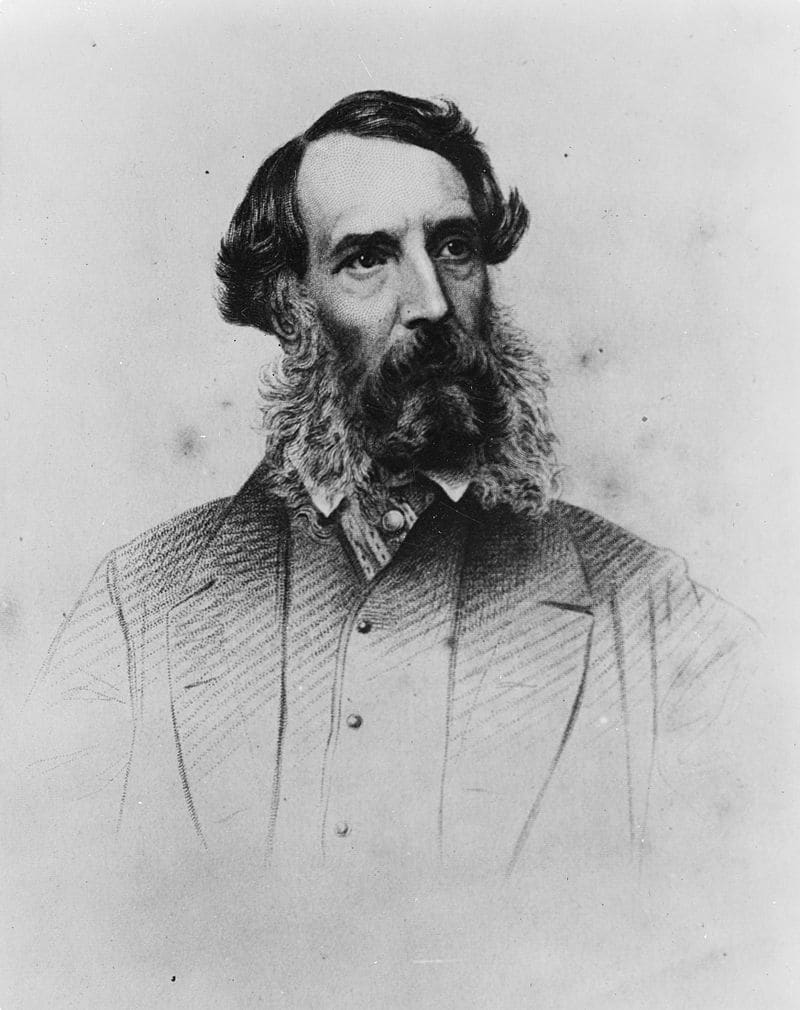
Eyre used the money to take up farming in New South Wales, relinquishing his property to overland sheep and cattle to Port Philip in 1837, with John Baxter, who would later become his exploration companion. Later that year, he was among the first to overland stock from Sydney to the new colony of Adelaide, selling cattle for a huge profit.
With the money, he bought land in South Australia, but soon became restless yet again. In 1839, Eyre explored the arid mallee lands of what would later be named the Eyre Peninsula after him. The following year, he made a sea journey to King George’s sound, Albany, Western Australia, with sheep and cattle that he then brought to Perth.
In the meantime, prominent South Australians became anxious to promote further exploration. They proposed an expedition to Western Australia, linking the two states overland for the first time. Eyre suggested that the organising team look to the north, as having explored the Eyre Peninsula, he felt it unlikely that a useful stock route existed to the west. The mouth of the Victoria River, on the north coast of Australia, had recently been found, and some believed that it might connect to the longed-for inland sea. On 18 June, 1840, Eyre’s expedition rode northwards, to explore Australia’s red centre. At the time, the explorer was just 25 years of age.
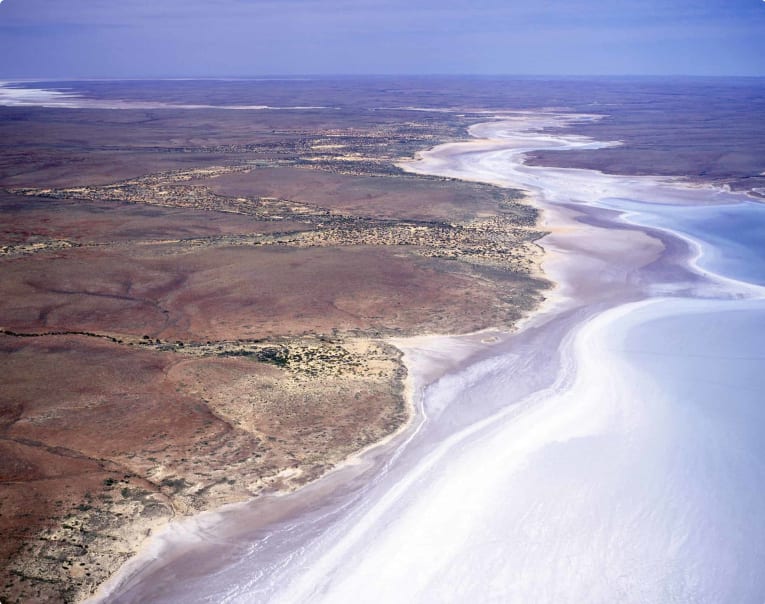
The party reached the Flinders Ranges in early July, staying there until mid-September. Salt lakes appeared to ring the Flinders in every direction. Looking at the bed of Lake Torrens, he wrote,
“The whole was barren and arid-looking in the extreme, and as I gazed on the dismal scene before me I felt assured, I had approached the vast and dreary desert of the interior, or, it might be, was verging on the confines of some inland water, whose sterile and desolate shores seem to forbid the traveller’s approach”
The group then turned around, despairing of finding a route to central Australia. Yet – instead of heading back to Adelaide, Eyre made an extraordinary decision: to journey around the vast Great Australian Bight to Albany.
His choice remains perplexing. If Eyre had been so put off by the relatively well-watered Flinders Ranges, why did he decide to head into even more arid and unwelcoming territory? Having argued against the route to the west, what made him seek it out?
Edward Stokes has suggested that Eyre’s English upbringing meant that he struggled to understand the Australian landscape: he looked for major features, and when none eventuated, he jumped to conclusions. Looking at the vast salt pans of the Flinders Ranges, he concluded that the lakes were “one and the same”, forming a vast barrier that could not be pushed through.
He was also likely guided by the assumption of an inland sea. Matthew Flinders had mapped the southern coastline in 1802, and his charts had given Eyre precise figures to fix on as he passed over land. Unable to see over the cliffs, Flinders had wondered whether they were “a narrow barrier between an interior, and the exterior sea”. Only a land explorer could prove or disprove this assumption.
Eyre quit the Flinders Ranges, picked up supplies in Port Lincoln, reaching Streaky Bay on the Eyre Peninsula in November, 1940. He left Streaky Bay with a large party of Aboriginal and European men. The party had provisions, two drays and a cart, 13 horses, and a small flock of sheep. They were accompanied by Waterwitch, a government cutter following along the coast, that Eyre hoped might be of use “for inland explorations, should it be necessary”.
The daily stages across scrub-covered sandhills exhausted the men, who cursed the sand, drifting in from the windy Southern Ocean. Luckily, however, the Aboriginal men were able to lead the team to wells each night, that would have easily been missed by the European explorers. By 11 November, the expedition was camped thirty kilometres west of Ceduna, the gateway to the Nullabor Plain. In the area, freshwater existed, formed by rainwater percolating through dunes, but thanks to the fine sand constantly drifting in, could get lost over night. It was a long way between permanent waterholes.

On 17 November, Eyre reached Fowlers Bay, South Australia’s western-most coastal settlement. With the South Australian border terminating only 50 kilometres west of Fowler’s Bay, Waterwitch could go no further. As the ship had taken all the heaviest supplies, Eyre recognised that he could only press on with a small party.
At Fowler’s Bay, the Aboriginal members of the party departed. Eyre nonetheless pushed on. Failing to discover water, Eyre retreated after only 70 kilometres.
Within days, he made a second move from Fowler’s Bay, this time taking a dray-load of water-filled casks and trudging 100 kilometres, almost reaching the Head of Bight. Three of his best horses perished on the return journey through the December heat.
Eyre still believed he might find a way north, but only with a smaller party. On the 18th of December he dispatched the Waterwitch to Adelaide with two men and an urgent request for food for the increasingly gaunt horses. Meanwhile, he rode west with a drayload of water kegs to fill en route, but the horses collapsed four days into the journey.
Eyre pushed on, reaching the Head of Bight on 7 January 1841. An Aboriginal group camped there escorted him to Yeer comban cowie, a permanent well among the sand drifts, while warning him that the next permanent water lay 10 days journey to the west, beyond the cliffs’ end. Inland, there was no water whatsoever. Flinders’ hoped-for “Inland Sea” did not exist. Moreover, there was no watered route northwards to central Australia. He returned to Fowlers Bay knowing that his expedition was in vain.
Yet, pride made him push on yet again. He was driven by a personal quest, “to attempt to force a passage around the Great Bight”. With minimal provisions, he was accompanied by only four men: Baxter, his old partner; Neramberein and Cootachah, two teenagers from the Flinders Ranges who had travelled with him before; and Wylie, likely a member of the Menang group of Noongar people from around Albany, who came ashore from the Hero, a government cutter that had replaced Waterwitch.
Five days later the Hero returned to Adelaide. “The bridge was broken down behind us, and we must succeed in reaching King George Sound or perish”, Eyre wrote in his journal. He set 24 February for their departure, but was interrupted when the Hero returned that morning. His decision to push westward in the summer heat was deemed “madness”; the cutter contained letters from Adelaide begging him to return.
Eyre pressed on. The weather was surprisingly cool, and helped by water casks buried en route, they reached Yeer comban cowie on the 2nd of March. Soon afterwards he reached the end of the cliffs, where the town of Eucla would be established as a repeater station on the East-West Telegraph Line in 1877. Here, Eyre found Aboriginal soaks containing fresh water.
On the 25th of March the crew pushed on, discarding about 90 kg of supplies to lighten their load. Four days later, the men drank their last water, and the following morning they sponged up dew to eat their last tea and eat their last damper. They were now 230 kilometres from the soaks at Eucla, facing the possibility of starvation. Luckily, they were able to find a soakage, leading to a deep well. Local Mirning people told him of another, better well, only a few kilometres to the west.
They were roughly at the half-way point from Fowlers Bay to Adelaide. “We had advanced into a country through which we could never retreat.” Half-starved, they trudged 120 kilometres in three and a half days, shooting and eating the weakest horse of their party.
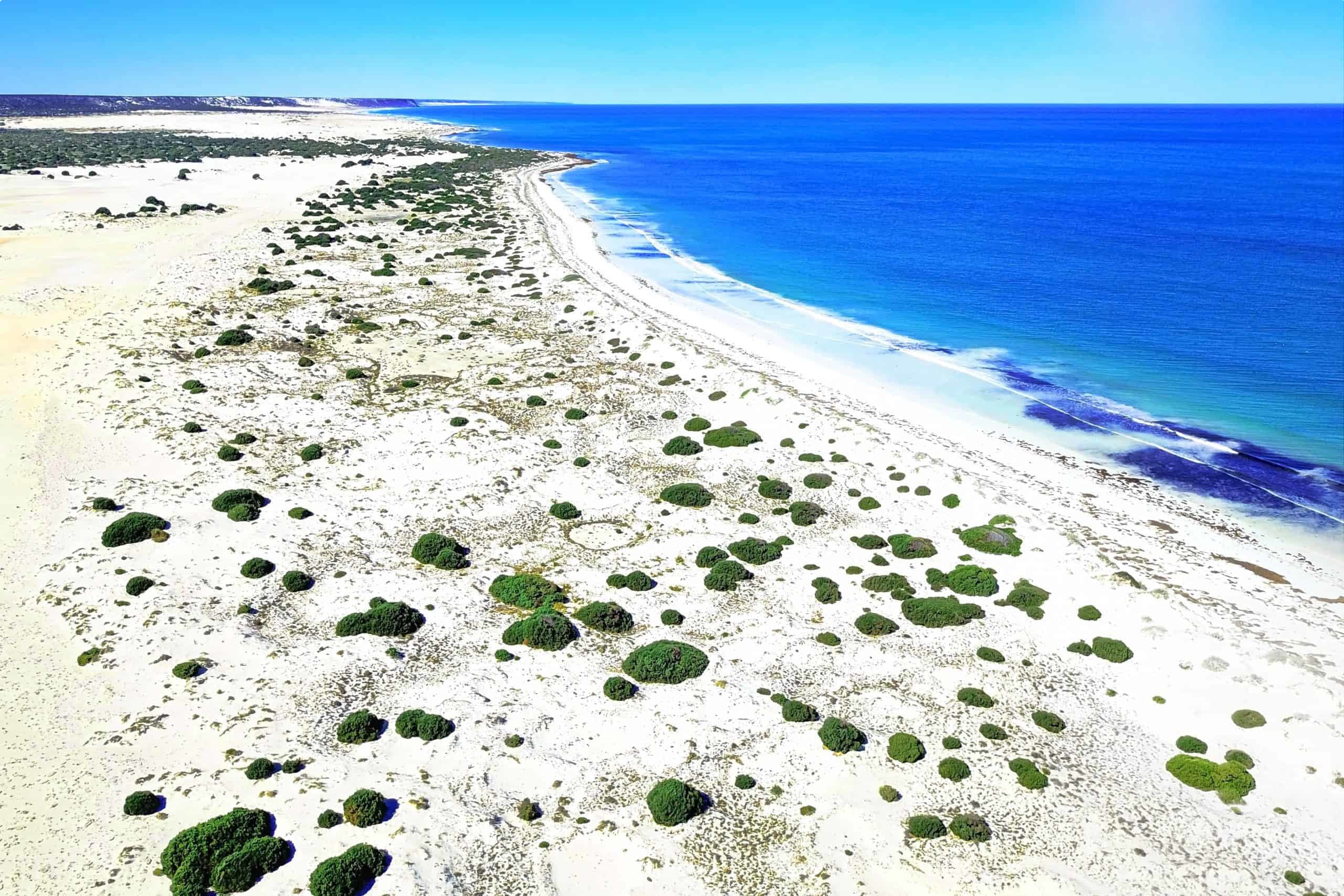
Three days later, likely believing that Eyre’s mania would lead them to their deaths, Wylie and Neramberein deserted the group. They came back three days later, finding little available foods in the area.
Facing more waterless cliffs, the group hoped for the prospect of rain. On the 29th of April thunderclouds swept in, and Baxter urged Eyre to camp. It was the wrong decision. The clouds dispersed before dark. Disappointed, they camped for the night.
At around 10.30pm that night, Eyre heard a gunshot. Neramberein and Cootachah had shot Baxter and fled. Baxter had likely came across them as they were taking food from the stores, likely hoping to abandon what they saw as a hopeless journey. Eyre was devastated:
“The horrors of my situation glared upon me with such startling reality, as for an instant almost to paralyse the mind.”
Wylie decided to stay with Eyre, perhaps hoping to return to his family in Western Australia. The two men pressed on another 400 kilometres, reaching Israelite Bay a fortnight later. They were utterly worn out, the horses having gone six days without water.
After Israelite Bay, the landscape finally changed. Limestone gave way to granite, and the horses fed on the best grass they had encountered since Fowlers Bay. On 17 May, they saw water trickling over a granite slab – “the only approximation of running water we have found since Streaky Bay”, Eyre noted. Finally, they were able to ride horses again, but Eyre and Wylie still went hungry.
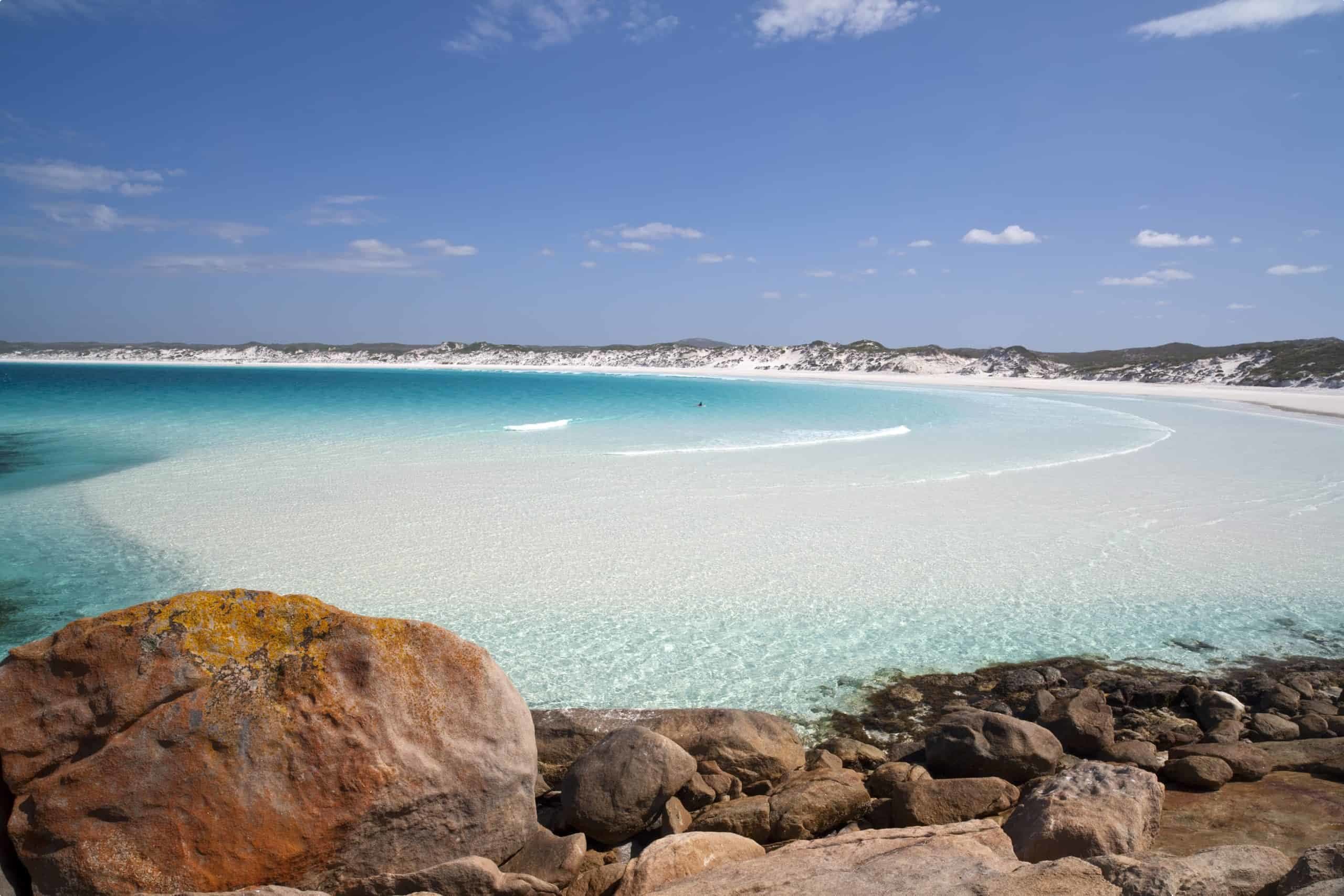
On the 2nd of June, slightly east of today’s Esperance, they saw an incredible sight: a ship at anchor, barely 10 kilometres away. It was a French whaler, the Mississippi. The ship’s captain, Rossiter, allowed them aboard for two weeks. “It seemed more like a dream than reality”, Eyre marvelled of their sudden change of fortune. Rossiter pressed supplies on them – cognac and Dutch cheese – and they continued the 450 kilometres to Albany.
The last part of their journey was made in torrential rain and cold. Streams and swamps were swollen by winter rain. Finally, Eyre and Wylie reached Albany on 7 July, where Wylie found that his family and people had assumed that he was lost or dead.
For his trek, Eyre was awarded the Royal Geographic Society gold medal and has had a number of geographical features named after him, including Lake Eyre and the Eyre Peninsula. Despite his crucial role, Wylie has not been so recognised, though he received a medal from the Western Australia Agricultural Society and a lifelong government pension. Eyre went on to become a colonial administrator, eventually returning to England, where he died in 1901.
Odyssey Traveller follows in Eyre’s path around Southern Australia on a number of our new tours of South Australia. In particular, you may be interested in our tour of South Australia‘s Eyre Peninsula, Yorke Peninsula, and Gawler Ranges, which follows Eyre’s path from Port Lincoln to Streaky Bay. On the way, we learn about the history of Australia‘s ‘seafood frontier’, spotting sea lions and the great white shark, enjoying panoramic views of the Southern Ocean and viewing ancient sandstone rocks in the Gawler Ranges.
We also visit some of the areas explored by Eyre in our Flinders Range and Outback guided tour, which explores the Aboriginal culture, geology, and abundant wildlife of Wilpena Pound and the Flinders Ranges National Park.
Eyre’s path through Western Australia is also visited on our Wildflower Walking Tour of Western Australia, devoted to south-west Australia‘s extraordinary biodiversity, following Eyre and Wylie’s path from Esperance to Albany.
You may also be interested in our Adelaide city and surrounds tour, which takes in many of South Australia‘s premier attractions. We make a day trip to the remarkable rocks of Kangaroo Island and enjoy gourmet food and a wine tour among the rolling hills of the Barossa Valley and McLaren Vale wine regions. We also make a day tour cruise down the Murray River, and explore Arts and Crafts mansions in the Adelaide Hills.

Articles about Australia published by Odyssey Traveller:
- The Kimberley: A Definitive Guide
- Uncovering the Ancient History of Aboriginal Australia
- Aboriginal Land Use in the Mallee
- Understanding Aboriginal Aquaculture
- Mallee and Mulga: Two Iconic and Typically Inland Australian Plant Communities (By Dr. Sandy Scott).
- The Australian Outback: A Definitive Guide
- The Eyre Peninsula: Australia’s Ocean Frontier
- Archaeological mysteries of Australia: How did a 12th century African coin reach Arnhem Land?
- Ancient Aboriginal trade routes of Australia
For all the articles Odyssey Traveller has published for mature aged and senior travellers, click through on this link.
External articles to assist you on your visit to Australia:
- Australian Dictionary of Biography: Edward John Eyre and Wylie
- SA History Hub: Edward John Eyre
- Nullabor Net: Edward John Eyre
- Solo trekker Steve Woore follows runaway teen whalers’ 500km pioneering trek across Eyre Peninsula
Related Tours

15 days
Sep, Dec, Jan, Feb, Mar +2Eyre & Yorke Peninsulas, and the Gawler Ranges
Visiting South Australia
Small group tour South Australia. Yorke, Eyre, and Gawler Ranges, discover the local history.
From A$10,350 AUD
View Tour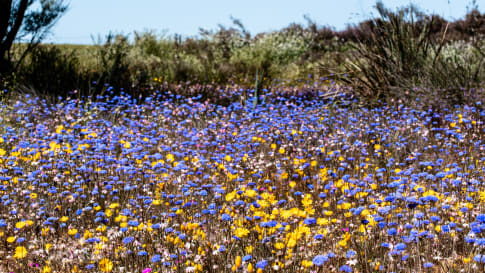
15 days
Aug, SepWildflowers tour of Western Australia
Visiting Western Australia
Escorted small group tour for senior and mature travellers as a couple of solo traveller. Upto 12 people of WA's Wildflower regions including Esperance and the Fitzgerald river National park. Local guides and program leader share knowledge about this fascinating region whilst in bloom.
From A$12,250 AUD
View Tour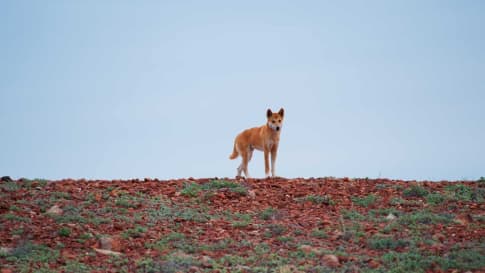
days
Apr, May, Jul, Aug, Oct +2Small group tour of Australia's Flinders ranges
Visiting South Australia
Escorted small group tour of the Flinders range in South Australia from Adelaide. Learn about Coober Pedy, Wilpena pound and water system of Lake Eyre as we explore and learn also about the history of the people who explored the Flinders.
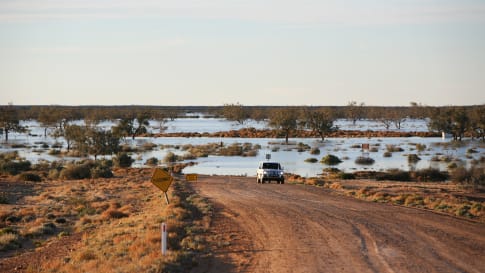
65 days
MarLong tour of Australia for a small group
Visiting New South Wales, Northern Territory
Small group tour for senior couples and solo travellers touring Australia. Travelling through the outback and visiting many of the famous sights as well as off the beaten track locations. Learn about the history of the people who explored the deserts, from indigenous communities to Europeans, as well as Burke and Wills, visit White Cliffs, Marree and far north Kakadu and the Kimberley.
From A$48,995 AUD
View TourArticles

Aboriginal culture of the Flinders Ranges, South Australia
The iconic Flinders Ranges of South Australia have a rich Aboriginal heritage and are home to a number of vitally important cultural sites and ancient artworks that this small group tour for mature and senior travellers has the opportunity its to learn about.

Albany and ANZAC, Western Australia
Albany is the southernmost town of Western Australia. The Wildflower small group tour visits this historic town with a strong ANZAC connection. Albany before the Swan River colony, later to be known as Perth.

Charles Sturt and the search for the inland sea
Sturt is an iconic British explorer.From this article escorted small group tours for mature and senior travellers may join as couples or solo travellers programs that explore and share Aboriginal history, the landscapes and culture of the Australian outback with Stuart and Eyre, Burke and Wills and more.

Expeditions of John McDouall Stuart in the Flinders.
John Stuart was an explorer who mapped the Flinders ranges as well as a path through the centre of Australia. The principal road from Port Augusta to Darwin is the Stuart Highway. The Small group tour of the Flinders ranges spends time learning about Stuart.

Gawler Ranges and Lake Gairdner, South Australia
South Australia proves itself to be interesting from a landscape, wildlife and human history perspective on this collection of Australian tours. These 3 facets form part of a small group package tour for mature and senior travellers to consider with a group leader, whether as a couple or single traveller exploring the Eyre and York Peninsula.

History of the Fleurieu Peninsula, South Australia
Fleurieu Peninsula is part of a small group tour of Adelaide for mature and senior travellers seeking to travel as a couple or as a solo traveller. The Peninsula is historically important, click through to learn... It is also where you will find Mclaren Vale.

Landscape of Southern Australia from Mallee and Mulga.
Escorted small group tours for mature and senior travellers in Western Australia, Victoria, South Australia & NSW drive through former Mallee country. Article explains the iconic beginnings of Mallee and Mulga in the arid landscapes.

Short history of Adelaide, Australia
The capital of South Australia, Adelaide has a fascinating and distinctive history as the only Australian state without a convict past. On both of these small group tours; Adelaide or the Flinders ranges we explore and learn about this city.

The Australian Outback: A Definitive Guide
Explore learn and consider what is the outback in this article. For mature and senior travelers considering joining a small group package tours into the outback to see, learn and explore about this unique place, not only the landscape but the Aboriginal approach to living. On each of the tours for couples and the single traveler you learn something different but fascinating, from Outback Queensland, the Flinders, Broken Hill and the Kimberley and the wildflowers all contribute to this question, what is the outback?
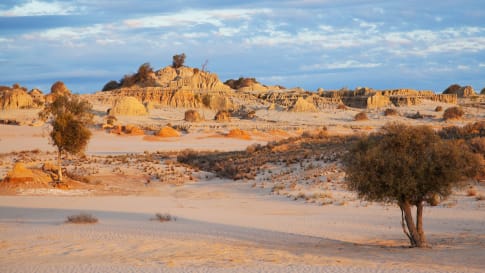
Uncovering the ancient history of Aboriginal Australia
For small group escorted tours of Australia in Queensland, Victoria, New South Wales, South Australia, Tasmania, Western Australia and the Northern Territory a guide on Aboriginal culture for mature and senior travellers.


